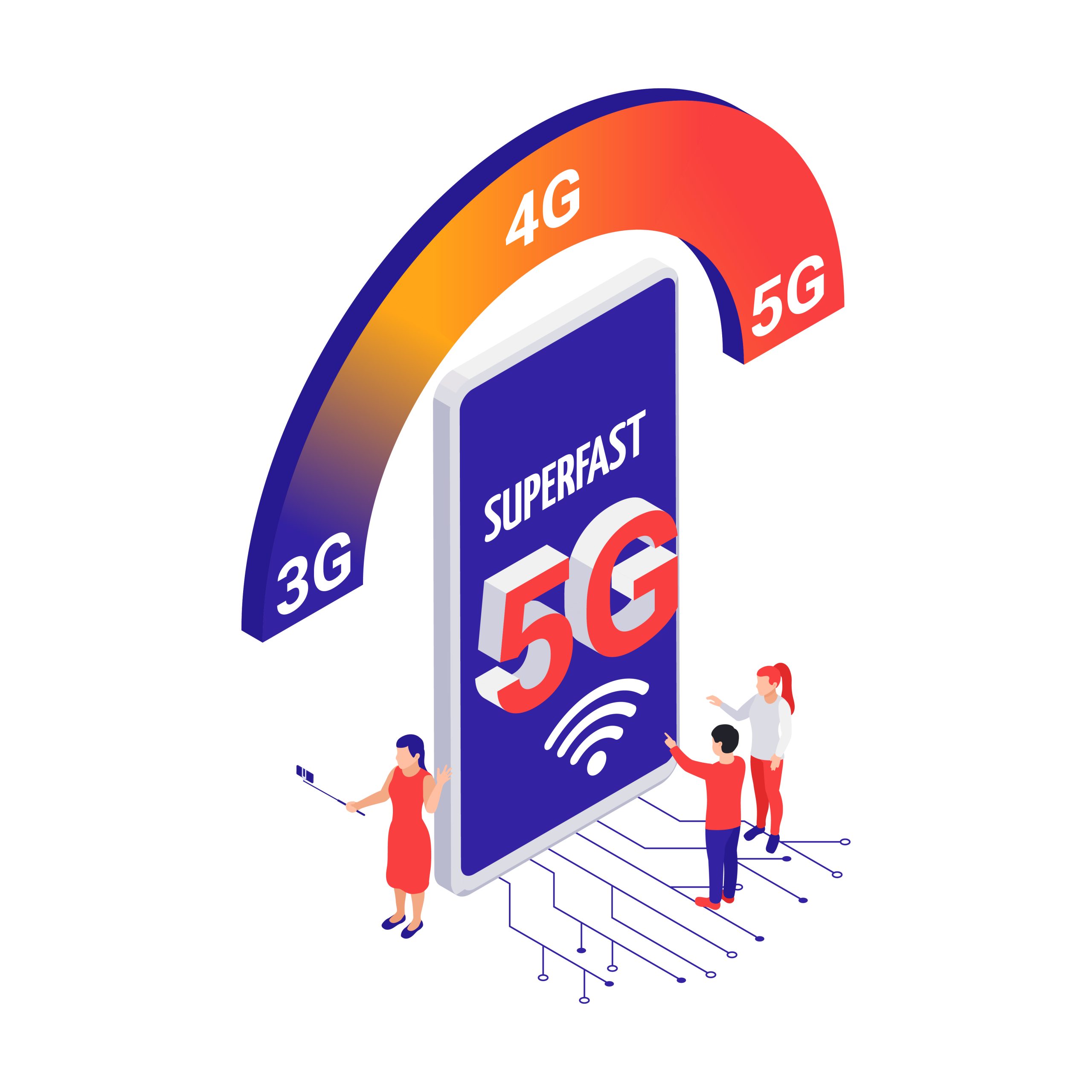The Battle of Technology 5G vs 4G
The fifth-generation wireless technology, or 5G, has been touted as the next big thing in the telecommunications industry, promising faster speeds, lower latency, and greater capacity than its predecessor, 4G. But how does 5G compare to 4G, and what benefits does it offer?
Speed and Latency
One of the most significant advantages of 5G over 4G is its speed. 5G promises to deliver speeds up to 100 times faster than 4G, allowing for lightning-fast downloads, streaming, and web browsing. While 4G networks typically offer speeds between 10 and 100 Mbps, 5G networks can provide speeds of up to 20 Gbps.
In addition to speed, 5G also boasts lower latency than 4G. Latency refers to the time it takes for data to travel from the device to the network and back again. 5G networks have a latency of just 1 millisecond, compared to the 30-50 milliseconds of 4G networks. This means that 5G can support real-time applications like online gaming, video conferencing, and autonomous vehicles.
Coverage and Capacity
While 5G offers faster speeds and lower latency than 4G, it is still in the early stages of deployment. 4G networks are more widespread and offer better coverage than 5G networks, which are currently limited to certain urban areas. However, 5G is expected to expand rapidlyin the coming years, with more networks and devices supporting the technology.
In terms of capacity, 5G is designed to handle more devices and data traffic than 4G. This is achieved through the use of higher frequency bands, which provide greater bandwidth and capacity. 5G networks also use advanced technologies like beamforming and massive MIMO (multiple-input, multiple-output) to improve coverage and capacity.
Compatibility and Cost
Another factor to consider when comparing 5G and 4G is device compatibility and cost. While the latest smartphones and tablets support 5G, older devices may not be compatible with the technology. This means that users may need to upgrade their devices to take advantage of 5G.
In terms of cost, 5G plans and devices are generally more expensive than their 4G counterparts. However, as 5G becomes more widespread and the technology matures, prices are expected to come down.
What are some of the challenges of upgrading to 5G?
Upgrading to 5G is a complex process that involves several challenges. Here are some of the main challenges:
Infrastructure: To support 5G networks, a significant amount of new infrastructure is required, including more antennas, base stations, and other network equipment. This can be expensive and time-consuming to deploy, particularly in areas with dense populations or difficult terrain.
Spectrum availability: 5G networks require access to a wide range of radio frequencies to operate effectively. However, many of these frequencies are already in use by other technologies, and there is a limited amount of available spectrum. This can make it challenging to deploy 5G networks in some areas, particularly in urban environments.
Interference: 5G networks operate at higher frequencies than 4G networks, which can make them more susceptible to interference from buildings, trees, and other obstacles. This can impact network coverage and performance, particularly in urban environments.
Cost: Upgrading to 5G requires significant investment in new infrastructure and technology, which can be costly for network operators. This can make it challenging to deploy 5G networks in some areas, particularly in less densely populated areas or in developing countries.
Standards and compatibility: 5G is still a developing technology, and there are multiple competing standards and technologies that are being developed. This can make it challenging for network operators to ensure that their 5G networks are compatible with other networks and devices.
Public health concerns: There are some concerns about the potential health effects of exposure to the higher frequencies used by 5G networks. While the scientific consensus is that 5G is safe for human health, these concerns can lead to public resistance to the deployment of 5G networks in some areas.
These are some of the main challenges of upgrading to 5G. Despite these challenges, many countries and network operators are investing in 5G as a way to support the growing demand for mobile data and to enable new applications such as autonomous vehicles, smart cities, and the Internet of Things.
What are some of the most promising applications of 5G technology?
5G technology has the potential to revolutionize a wide range of industries and applications. Here are some of the most promising applications of 5G technology:
Autonomous vehicles: 5G networks can support the high-speed, low-latency communications that are required for autonomous vehicles to operate safely. This includes communication between vehicles, with infrastructure, and with other devices like smartphones and wearables.
Internet of Things (IoT): 5G networks can support a much larger number of connected devices than 4G networks, making them ideal for IoT applications. This includes everything from smart homes and cities to industrial automation and healthcare.
Virtual and augmented reality: 5G networks can support the high bandwidth and low latency required for immersive virtual and augmented reality experiences. This includes everything from gaming and entertainment to education and training.
Smart cities: 5G networks can enable a wide range of smart city applications, including traffic management, public safety, environmental monitoring, and more. This can help to improve quality of life for city residents and reduce the environmental impact of urban areas.
Healthcare: 5G networks can support a wide range of healthcare applications, including remote patient monitoring, telemedicine, and more. This can help to improve access to healthcare and reduce healthcare costs.
Mobile commerce: 5G networks can enable faster, more secure mobile payments and other commerce applications. This can help to improve the customer experience and drive new revenue streams for businesses.
Conclusion
In summary, 5G offers significant improvements over 4G in terms of speed, latency, capacity, and real-time applications. However, 4G still offers better coverage and is more widely available than 5G. Ultimately, the choice between 5G and 4G will depend on individual needs and circumstances. For users who require high-speed connectivity and real-time applications, 5G is the way to go. For those who prioritize coverage and affordability, 4G may be the better choice.

